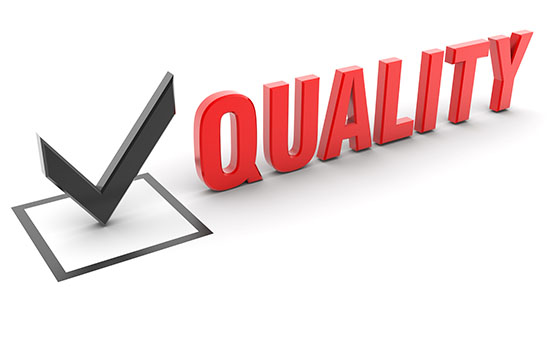
In today’s worlds, computer systems and electronic records play a critical role in all aspects of our lives, and they have revolutionized the way that people, companies and organization operate. Electronic based technologies will continue to have an impact on productivity and efficiency as we continue to use, and develop new and improved systems to communicate electronically, manage data and control systems and processes. As expected, these systems play a critical role in the operation of today’s pharmaceutical, biotechnology and medical device marketplaces. These industries, which are highly regulated, generate a plethora of data that must be managed in a secure and reliable manner. For most companies in these market sectors, the Good Manufacturer Practice (cGMP) quality system is designed to run their processes in an efficient, compliant and secure manner. To address the use of computer systems and management of electronic data records within the cGMP environment, the Food and Drug Administration (FDA) has been proactive in implementing rules and guidelines to ensure compliance can be evaluated and enforced. Understanding these guidelines can be critical for success
The FDA regulations specific to computer systems, electronic records and electronic signatures fall under 21 CFR Part 11. 21 CFR Part 11 is a section in the Code of Federal Regulations (CFR) that sets forth the United States Food and Drug Administration’s (FDA) rules on using electronic records and electronic signatures. In layperson’s terms, Part 11 is a law that is reviewed and enforced by the FDA that is intended to ensure that FDA regulated companies adhere to strict business practices by defining the criteria under which electronic records and signatures are considered to be accurate, authentic, trustworthy, reliable, confidential, and equivalent to paper records inclusive of handwritten signatures on paper (wet signatures). Part 11 essentially allows any paper records to be replaced by an electronic record and allows any handwritten signature to be replaced by an electronic one (digitally signed).

The introduction of 21 CFR Part guidelines can be traced back to the last century (early 1990’s) when a working group was assembled within the FDA to include pharmaceutical company representatives to determine how the industry would deal with electronic record keeping systems that fell within the paper-based GMP regulations. Over the next few years, multiple working groups began to outline how best these FDA regulated industries could ensure that rules were in place to enable the secure and effective use of electronic data formats. The end result was the FDA’s acceptance that they would consider electronic records to carry the same compliance requirements as paper records and signatures, and within the right parameters, would be equivalent to the traditional wet ink (handwritten) signatures. The official rules on Part 11 compliance became effective on August 20, 1997. In 2007, the FDA published the first Guidance Document on the use of Electronic Records and Systems. Since that time, more guidance documents have been issued to address changes and improvements in technology.
As with most major changes like this, there was certainly some confusion and controversy. FDA guidance documents are not written as factual law but are in fact open to interpretation. Thus, the process one organization implements to address the use of an electronic record may differ from that of peer organizations. Hence there are multiple ways to get the same results, but sometimes too many approaches can lead to confusion. At is core, the Part 11 rules and the FDA guidance documents are designed to allow life science organizations the greatest flexibility in implementing the required controls.
Even with the confusion and controversy, to their credit, the FDA has enabled the drug and medical device product companies to streamline and improve business processes, reduce turnaround time, and, in some cases, reduce costs through the establishment of standard criteria for the use of electronic records and signatures. As a result, companies are able to manage records and other content electronically, significantly decrease the risk of human errors, and improve time-to-market for many medical products.
Understanding some of the basics of an acceptable electronic system is key to ensuring that the work you are performing within a cGMP quality system meets the Part 11 requirements. There are three main areas in which FDA regulated companies must focus when dealing with 21 CFR Part 11:
- System Set-Up and Features – In accordance with 21 CFR Part 11 there are a range of features that you are required to have in place when implementing a computer system to manage electronic records and processes. Assurances for audit trail functionality, electronic signatures, security and data integrity, records retention and file formats are key examples.
- Standard Operating Procedures – FDA regulated companies that adhere to cGMP, operate based upon the use of Standard Operating Procedures to describe how their systems and processes work. To ensure Part 11 compliance, the SOP process must also govern how the computer systems and electronic records operate within the organization.
- Computer System Validation – When implementing an electronic system, a company must ensure that the electronic system is fit for its intended use. You must demonstrate that your system does what it should do as outlined in your SOP’s. Controls must also be in place that allow you to identify when the system doesn’t function as per its intended use.
In addition to the three key components noted, there are a number of key definitions that an operator within a cGMP, electronic system must be familiar with.
- Electronic Record: Any combination of text, graphics, data, audio, or pictorial information represented in digital form that is created, modified, maintained, archived, retrieved or distributed by a computer.
- Electronic Signature: A compilation of any symbol(s) executed to be the legally binding equivalent of an individual’s handwritten signature.
- Handwritten Signature: The scripted name or legal mark of an individual handwritten by that individual and executed or adopted with the present intention to authenticate a writing in a permanent form.
- Digital Signature: An electronic signature based upon cryptographic methods of originator authentication, computed by using a set of rules and a set of parameters such that the identity of the signer and the integrity of the data can be verified.
CS Analytical operates its cGMP, FDA regulated quality system in a completely electronic format. All parts of the system are governed by SOP’s specific to the process and there are multiple controls in place to ensure 21 CFR Part 11 compliance. Computer System Validation (CSV) play a critical role and to address this very 21st century need, CS Analytical employees a defined team of CSV specialists and a software engineer. With a laboratory team that collectively has more than 200 years of contract laboratory testing experience dating back to the last century, operating in the new electronic format has been a much needed and welcome improvement.

